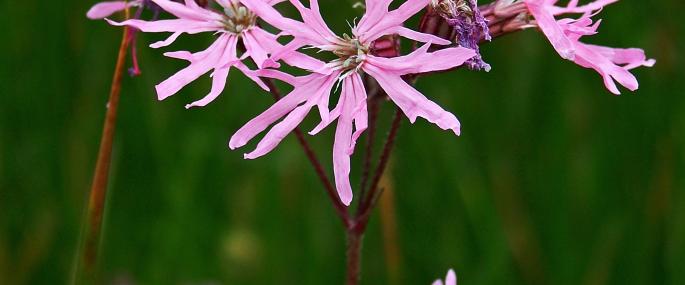Swaying in a gentle breeze, the delicate pink flowers of Ragged-Robin can be a joy to behold in any wildflower meadow, damp pasture or woodland ride. But it's not just passing humans that benefit from its star-shaped flowers, bumblebees, butterflies and Honey Bees all enjoy the nectar it produces. A growing favourite among gardeners, try planting Ragged-Robin in a boggy area or flower border and see who comes to visit...
The pink, frayed flowers of Ragged-Robin are an increasingly rare sight in the wild. Human activity, including the drainage of land for agriculture, the loss of ponds through development and the removal of wet woods, has resulted in the disappearance of many of the UK's wetlands. The Wildlife Trusts are working closely with planners, developers and farmers to ensure our wetlands are protected. You can help by becoming a member of your local Trust; you'll find out about exciting wildlife happenings, events on your doorstep and volunteering opportunities, and be helping local wildlife along the way.
